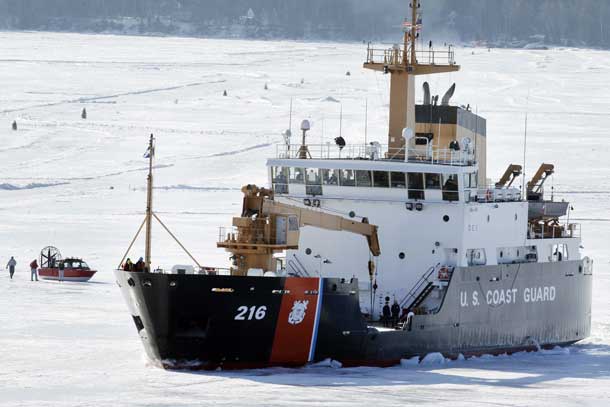
On March 13, 2020 the USCG Alder is in Duluth, Minnesota.
Once icebreaking begins, it is recommended that all recreational users of the ice – pedestrians, fishers, snowmobilers, all-terrain vehicle (ATV) operators – leave the ice during icebreaking operations.
The ice may move, creating a real danger for anyone on the ice. Additionally, they should plan their activities carefully and use extreme caution after operations are complete as the ice will remain unstable after the icebreaker has left the area.
Coast Guard icebreaking service on the Great Lakes and connecting waterways is delivered in close co-operation between the Canadian and United States Coast Guards. By working together the two Coast Guards ensure scheduled vessel traffic can move through the shipping channels and into and out of community harbours.
Ice Levels on Lake Superior
Currently, the 11.9 percent of ice cover on Lake Superior is on pace for the lowest ice cover in eight years. The last time the maximum ice cover extent on Lake Superior was under 10 percent was in 2012.







